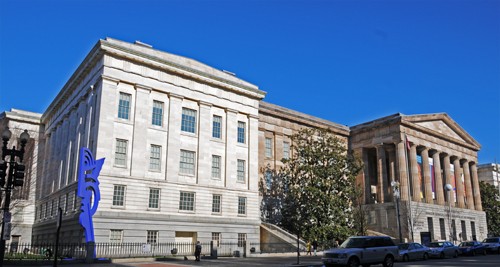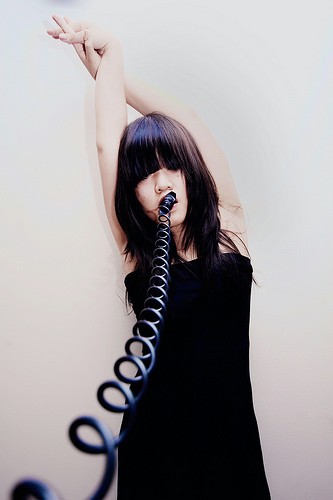One of my oldest and greatest friends, Phi, came with members of her family to live in the United States in the early nineties, around the same time that Tam Tran moved to Memphis, Tennessee from the town of Hue in Vietnam in 1992. Phi’s integration into American – and more precisely, Southern – culture, due directly to the turmoil resulting from the Vietnam War, always fascinated me, as the best example I have of the promise our country holds.
While every individual experience of America is by definition profoundly different, the transition between Asian and American cultures holds an assortment of implications and tests of fundamental values all its own. Which is why the National Portrait Gallery in Washington D.C., in collaboration with the Smithsonian’s Asian Pacific American Program, decided to feature an exhibition of artists conveying their personal backgrounds through portraiture.

Tam Tran, a shy 25-year-old who holds down a day job as an art director for Splash Creative and graduated from the University of Memphis, has an obvious vision and polish to her photos. Her portrait series was chosen along with the work of six other artists who range from celebrated fine-art photographers, to PhD. candidates and professors. Tran has exhibited work only a handful of times, garnering some much-deserved attention for her inclusion in last year’s prestigious Biennial at New York’s Whitney Museum of American Art. I had the pleasure of viewing “Portraiture Now: Asian American Portraits of Encounter,” on a recent trip to the nation’s capitol, and I must say, it was moving to see a promising young Memphis artist honored with work on display for the world’s stage. When we spoke, she hadn’t yet been to see the new exhibit, running until October 14, 2012, but will attend the reception on the 16th at the end of this week.

How did they choose your photos for the exhibit?
I’m guessing that Brandon, one of the curators, saw my show at the Whitney, was interested in what I did with my nephew, and went to my website. She didn’t really clarify how she saw my work. I just assumed she saw what I was doing, then she contacted me and said my self-portraiture was really fitting with their new show, so she asked me to send more. We corresponded through email for a couple of months, deciding what she wanted to show, so that’s how it all happened.
Why did you choose the title ‘Accents’ for your series?
I’m playing on how there are dialects in every language, important to each identity. I thought about calling it ‘Southern Accents,’ but felt like it might be too constricting, so I made it more bare and simple and straight to the point.
What does your collection ultimately say about identity?
Basically, I’m not just one identity, one note. You adapt to everything around you; the people you hang with, the books you read, the music you listen to. I feel like you don’t have to be just one set.
How is this exhibition important to you and your career?
People don’t know I’m a photographer until I tell them or they happen to see my work online or something. I kind of keep it a secret, keep it my own thing, but now people know, and I feel like I’m being watched. In a way it’s thrilling, but then it’s kind of scary and nerve-wracking.
How did you get interested in photography?
I don’t know how it found me, it was just so easy for me to snap pictures and then start conveying meanings and emotions with it. I can’t do it through painting and I can’t do it through writing, really. Anyone can be a photographer, I guess.
How does the shutter release function as part of the composition in all your pieces for this series?
To be honest, it’s easy to use a shutter release. You have to run back and forth with a self-timer, and I could use a wireless remote, but I opted for the cord because it reels my audience in, it’s more of a participation kind of thing.
What brought you to work for Splash Creative?
I’ve been there for three years. I do all the graphic works that they need, ads and stuff. I was interested in graphic design while I was majoring in journalism. The internet journalism course I took — you migrate to using Adobe Dreamweaver, you have to write and publish, do everything, the media and design work for it all — that piqued my interest. My classmate had a job at Splash and he connected me with David Brown, so I interned and just never left.